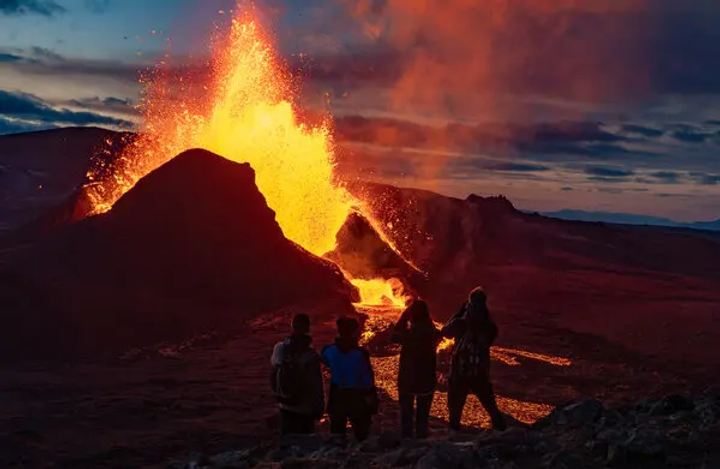By: Audrey Wang
Located on the southern peninsula of Iceland is a volcano called Fagradalsfjall. It first erupted 781 years ago and once again in 2021. Many residents and tourists on the peninsula traveled to the volcano over the course of six months to take pictures of the eruption. But this volcano would also help scientists discover what the world was like under us.
Although photos and videos from today’s latest handheld devices can capture our reality in crispy 4K, they are not enough to prove what is below our feet. Scientists needed a sample, a clue. Fagradalsfjall was the perfect volcano to collect samples from because it was currently erupting. On the first day of the eruption, a helicopter flew close to the volcano, and scooped up some lava. The sample was distributed to different labs to test. After the results came back, the scientists were shocked. The lava contained a variety of crystals.
Most volcanoes have lava that is spewed out from a reservoir in the earth’s crust. But Fagradalsfjall’s lava was primeval, proving that it came from a deep tank of magma, around the earth’s mantle. After this finding, more scientists rushed to collect more samples from the volcano, one of them being Ed Marshal, a biochemist from the University of Iceland. “We were working all hours – you’re asleep and the volcano’s still erupting and you’re like, ‘I got to get back out there,’” Dr. Marshall said. “But it’s hard to describe how rare this kind of thing is.”
Similar samples, along with the 2021 sample, have helped the scientists characterize what it is like under the volcano. In a paper in the journal Nature Communications, published in June, the scientists and researchers who investigated the composition of the crystals in the lava samples found that they contained a wide variety of material – various parts of the mantle and the amalgamate layer. This helped scientists form a more accurate image of the mantel and below, as this kind of range was unexpected.
What makes Fagradalsfjall even more unique is that it exists at a fault line between the Eurasian and North American tectonic plates, which pull apart and rub against each other constantly. Periodic volcanic activity happens about every thousand years, and the recent eruption came with more than a year of earthquakes in the area. The director of the Iceland GeoSurvey, Olafur Flovenz, published a paper with his colleagues that proposed the activity was not caused by a body of magma, but from carbon dioxide being released by a deeper pool of magma, located between the mantle and the crust, called the Mohorovicic discontinuity.
When Fagradalsfjall erupted in 2021, the lava observed is said by scientists to come directly from the Mohorovicic discontinuity. “For the first time, more or less, we are looking at an active eruption on our oceanic crust where the lava is directly erupting from the mantle source,” Dr. Flovenz said.
The Fagradalsfjall has done the scientists a great favor – helping them create a more vivid image of the world that is under us. The crystals in the lava samples are definitely an amazing find and will keep the scientists busy for a long time.











